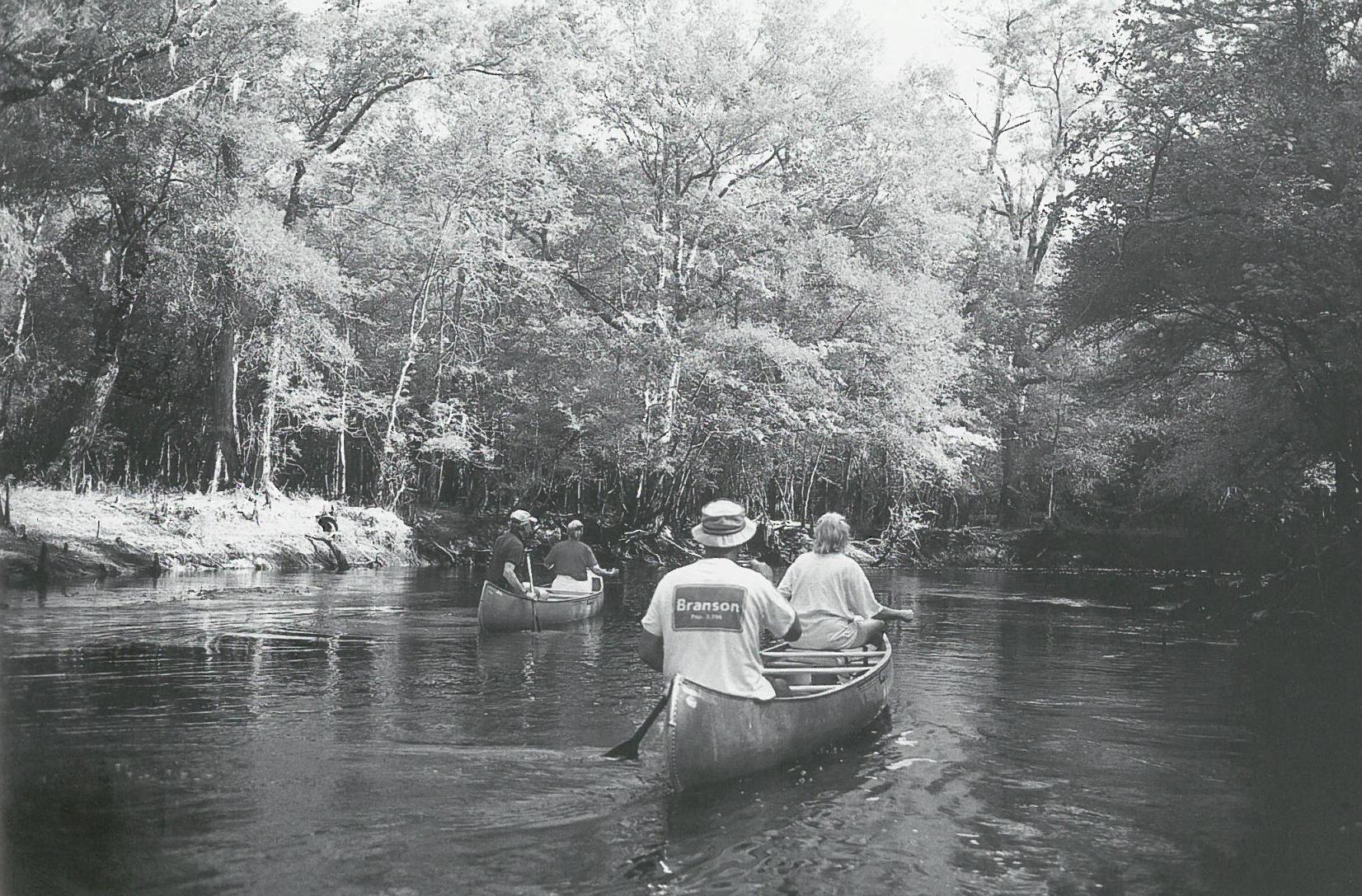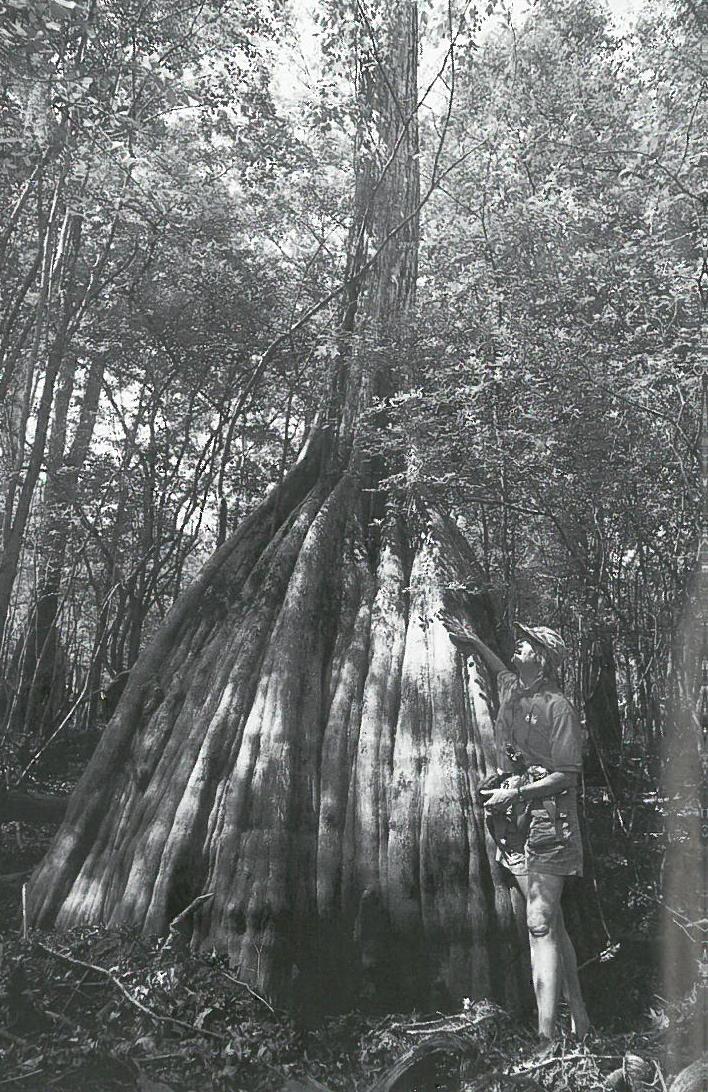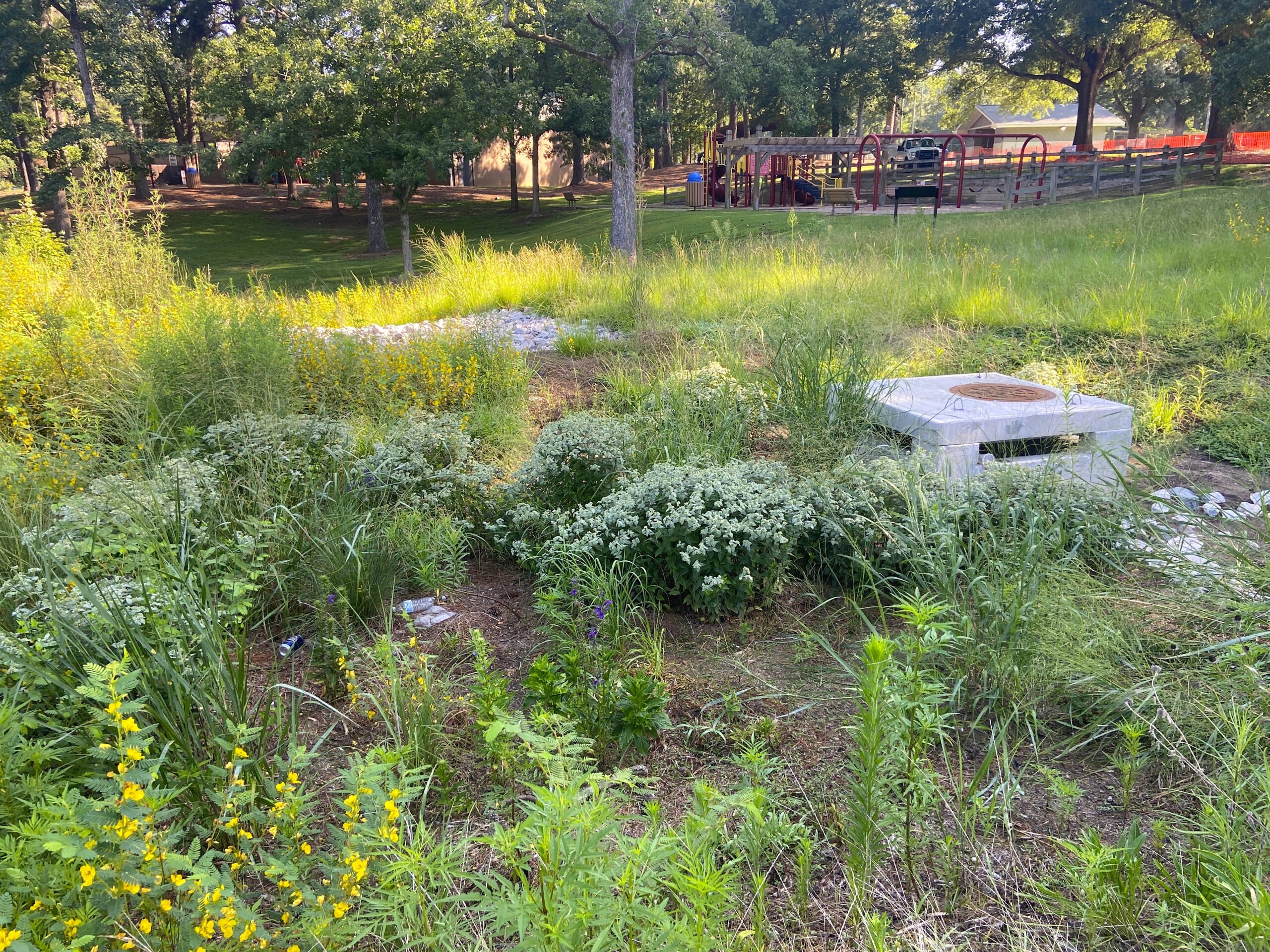Waccamaw River: Abundant Resources Provide Enchanting Experiences

It’s a clear, sunny day as Doug Smith pushes an aluminum canoe into the slow-moving water of the Waccamaw River.
As Smith paddles through a thick, forested area in Columbus County, he notices a ripple in the water and maneuvers around some tree branches.
“This is where beavers are building a small dam,” says Smith, who is leading a trip down the river. “There were no beavers on the river when I was a child.”
As Smith continues to stroke down the river, the only sign of life is the lapping of paddlers and the drumming of a pileated woodpecker.
“When you go down the river, it is like going back a hundred years,” says Smith. “You hear an occasional plane, and that is it.”
Joy Pinson of Murrells Inlet, S.C., agrees.
“I have been on the Waccamaw in South Carolina, but not this far up,” says Pinson, president of the Winyah Rivers Foundation. “It is so quiet and remote.”
Throughout the paddling trip, the water level is only knee deep because of the low amount of rain. The color of the water is so black and clear that it looks like a mirror reflecting giant cypress.
“The water is black because it drains through hardwood swamp forests and collects tannins that come from decomposing organic matter,” says North Carolina Sea Grant education specialist Lundie Spence, who was part of the paddling group. “The water is perfectly clean. Because there has been no recent rain, the river isn’t carrying any sediments and is very clear.”
The paddling trip is one of the first for the newly formed Waccamaw River Outdoor Center in Columbus County.
“By showcasing the Waccamaw, we are going to protect the river,” says Charles Hickman, a co-owner of the outdoor center. “We will bring in people who care about the environment and keep the river from disappearing. If we don’t do something, the river will disappear in a hundred years.”
Last year, Hickman, Smith and William Wayne purchased 60 acres at Old Dock near Whiteville. Near the Waccamaw riverbank is a large grassy area where canoes and kayaks can be stored, and cars can be parked.
The group plans to build an education and convention center on the picturesque property.
“We have access to many landings all along the river,” says Hickman. “My vision is to have marked hiking and paddling trails with wildlife observation stations all along the way.”
Waccamaw Watershed
The center is located near the river’s headwaters, not far from Lake Waccamaw in Columbus and Brunswick counties. The river converges with the Intracoastal Waterway near Bucksport, S.C., empties into Winyah Bay, and then flows past Georgetown to the Atlantic Ocean.
The Waccamaw River is part of the Waccamaw Drainage System, which consists of three headwater streams: White Marsh Swamp on the west, Juniper Creek and Green Swamp on the east, and the upper Waccamaw River, which drains Lake Waccamaw and other surrounding swamps.

“The water flow of the Waccamaw River system is important,” says Spence. “It is similar to the Everglades in Florida, where water flows over the larger wetlands in a thin layer and finally drains into the main body of the Waccamaw River.
“This sheet flow allows for slow infiltration of stormwater and prevents sediment from flowing into the river and also keeps the water flowing evenly. If toxins flow into upstream waters, they can affect everything downstream.”
One of the Waccamaw’s most important wetlands is the Green Swamp, which is a botanical wonderland with small remaining areas of pine savannas and bay forest. The swamp also contains at least 14 different species of insectivorous plants, including extensive populations of Venus flytrap, sundew and four species of pitcher plants.
Several rare and unique animals also live in the swamp, including the red-cockaded woodpecker, the eastern diamondback rattlesnake, Bachman’s sparrow and the American alligator.
The North Carolina Nature Conservancy protects 15,900 acres of the swamp, a National Natural Landmark.
Recently, the conservancy bought 2,500 acres in tracts along the Waccamaw and Juniper Creek and 553 acres in the frequently submerged floodplain along the waters of White Marsh.
Hervey McIver, N.C. Nature Conservancy land protection specialist, says the White Marsh is an important water source for the Waccamaw River. “Protecting water quality in the White Marsh by maintaining the filtering capacity of its forests not only enhances the full array of aquatic life near Whiteville, but also is critical to aquatic habitat downstream,” he says.
The river is also near Lake Waccamaw and Lake Waccamaw State Park. Lake Waccamaw is home to native fish and mollusk that are found only in or around the lake, including the Waccamaw killfish. It also has at least five species on the state’s rare plant list.
Crusoe Island
Columbus County also boasts a rich cultural heritage. For many years, Crusoe Island, now called Riverview, was home to numerous canoe builders and distinct river folks. Crusoe is technically not an island. However, it is surrounded by swamps and the Waccamaw River.
Because of the community’s isolation, most residents have a “distinctive” dialect, according to a study conducted by North Carolina State University graduate student Amy Gantt under the direction of Walt Wolfram, a William C. Friday distinguished professor in English.

“The approximately 100 European-American residents of Crusoe Island also are typified by their independence and wariness of outsiders,” the report says. Preliminary research has shown that the Crusoe Island dialect combines some features of southern pronunciation such as “tar” for “tire” and “fahn” for “fine” with some unique traits, such as the nasalization of vowels reminiscent of the way French speakers nasalize their vowels in words like “pan” or “bon.”
One of the island’s oldest residents is DoDo Clewis, 70, who lives in a tiny white house that is on a dead-end road and within a few yards of the riverbank.
“I was born here and lived here all my life,” says Clewis. “My papa dug boats. I watched him dig.”
Until recent years, Clewis was an active boat craftsman, digging boats, bowls — and even a few graves. The canoes were made from large cypress trees that he split in half with a saw. He then dug out the trees’ cores with an ax.
“Canoes were better man-made than they are now,” says Clewis. “It took some work to dig them. I used a big log and an ax. Gave my last boat to the Scouts.”
The tradition is a dying art because of new types of materials for manufactured canoes and a dwindling supply of cypress, according to Hickman.
The inside of Clewis’ home reflects his simple life on the river. The living room has a wood stove. On the walls are numerous photos of his dugout canoes and mounted deer.
“I been hunting all my life,” he says. “There ain’t no deer in the swamp I couldn’t get.”
A plank boat with a paddle lies on the floor of the covered porch.
For most of his life, Clewis fished each day in the river. He walks to the riverbank, drawing a line in the dirt to show the path of the river.
“The river comes up and then gets narrow and turns again. It goes about a mile and then moves into the lake,” he says.
Ecotourism
With the rich heritage of Crusoe Island and the river’s abundant natural resources, Columbus County is an untapped area for ecotourism.
“Ecotourism has a lot of value in Columbus County because a lot of industries have folded here,” says Scott Schmolesky, park ranger/technology instructor at Southeastern Community College in Whiteville. “Lake Waccamaw and the river are such natural gems.”
Spence agrees.
“When people go to a new area to paddle, they usually come down to see the wildlife and beauty,” she says. “But more often, they get hooked on the people.”
In eastern North Carolina, ecotourism — which includes paddling and other outdoor activities — has boosted local economies.
Each year, paddlers contribute more than $148 million to North Carolina’s coastal economy, according to a survey conducted by North Carolina Sea Grant extension director Jack Thigpen. Nearly one-third of these paddlers have an annual household income of more than $90,000, and more than two-thirds are professionals or managers, the survey reports.
“Clean water was the number one reason to choose a paddling location,” says Thigpen.
Because of its remoteness and beauty, canoeists have been paddling the river for centuries. In 1878, Nathaniel H. Bishop wrote of his Waccamaw adventures in the Voyage of the Paper Canoe.
“Down the tortuous, black, rolling current went the paper canoe, with a giant forest covering the great swamp and screening me from the light of day,” Bishop wrote. “The swamps were submerged, as the water poured out of the thickets into the river it would shoot across the land from one bend to another, presenting in places the mystifying spectacle of water running up the stream, but not up an inclined plain.
“Festoons of gray Spanish moss hung from the weird limbs of monster trees, giving a funeral aspect to the gloomy forest, while the owls hooted as if it were night.”
Waccamaw Study
A recent study of the Waccamaw River system by East Carolina University geologists recommends the creation of an independent commission to protect the water system and associated ecosystem’s abundant animal and plant populations.
“Wetlands in the vast Waccamaw drainage system originally represented 7.3 percent of the original total wetlands in North Carolina,” according to the study. “However, today the Waccamaw system is in serious jeopardy due to centuries of extreme land-use modifications resulting from growth and development pressures.”
The use of these lands for expanded agriculture and timber production, along with growing industrial and urban development, has led to accelerated ditching and draining, a team of researchers wrote in the report published by the N.C. Division of Water Resources.
“If people want to save the swamp and drainage system, it needs to have a comprehensive management plan that is developed by and implemented on a local basis by local citizens and user groups,” says ECU geologist Stanley R. Riggs, a former Sea Grant researcher who led the five-year study. “We need to get all user groups around the table talking and working together,” Riggs adds.
“The drainage system has been severely abused by groups that have ignored the cumulative impacts of all other activities and the long-term processes. We must use it and manage it based upon the dynamics of the drainage system.”
Riggs says the regional water management plan must include the interaction and linkage between ground and surface water.
“The drainage system is like an organism with many parts that all work together and interact,” says Riggs. “User groups need to pay attention to this.”
To protect the river, North and South Carolina residents formed the Winyah Rivers Foundation.
This summer, the grassroots organization is hiring a riverkeeper to protect the river’s resources.
“We chose the Waccamaw because it is still in fairly good condition,” says Pinson. “With the growth of the Grand Strand in North and South Carolina, it makes this timely. We need to prevent further degradation of the river.”
The Winyah Foundation and other groups also are fighting a large regional landfill on a 760-acre parcel in the heart of the Green Swamp, southwest of N.C. 211 in Columbus County.
“We feel there is too much risk associated with placing a landfill in the Green Swamp, which is at the headwaters of the Waccamaw,” says Pinson.
The Columbus County Board of Commissioners already has approved the project.
“The county is spending $1.5 million a year to dispose of solid waste,” says Amon McKenzie, chairperson of the Columbus commissioners. “We need a place to dispose waste. The experts were given the task of finding the most practical place. The swamp was what they came up with. We have spent 10 years trying to find an area for the waste.”
However, Lake Waccamaw Mayor Bo McNeill and a number of concerned residents are fighting the project.
“I don’t think it will be environmentally safe,” says McNeill.
Lake Waccamaw is one of the largest natural lakes in the United States east of the Mississippi and has the distinction of being the only lake in North Carolina to have been designated an “outstanding resource water.”
The landfill is at higher elevation than the lake. “The site for the landfill drains into a creek. Any contaminants will run into Lake Waccamaw or into a creek, ending up in the Waccamaw River. The Waccamaw River is known to be one of the cleanest rivers in North Carolina. The potential danger to the environment for Lake Waccamaw or the Waccamaw River is too great for this landfill,” says McNeill.
The landfill still has to be approved by state and federal regulators.
Despite the debate, the bountiful resources on the river provide many opportunities for paddlers.
“It is a beautiful wilderness,” says Hickman. “Other than what loggers have done, the area is untouched. It is as far in the country as you can get. It is quiet, and nature lovers fall in love with it.”
To contact the Waccamaw River Outdoor Center, call 888/863-7978 .
To order a CD of the report “The Waccamaw Drainage System: Geology and Dynamics of a Coastal Wetland, Southeastern North Carolina,” contact Jeff.Bruton@ncmail.net or visit the Web: www.ncwater.org/ and follow the link to reports and publications on the Waccamaw.
This article was published in the High Season 2002 issue of Coastwatch.
For contact information and reprint requests, visit ncseagrant.ncsu.edu/coastwatch/contact/.
- Categories:


